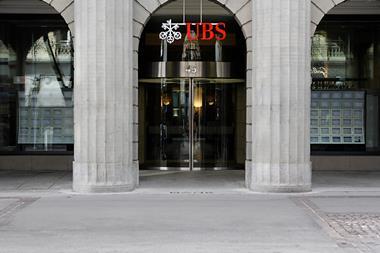A Towers Watson survey of Spanish occupational pension funds has shown those more closely monitoring the risk associated with individual asset classes achieving a better return risk.
The study attracted responses from 28 of Spain’s largest 40 pension funds, which manage around €21bn in total. Responses account for 79% of the €26.7bn in assets run by the 40 largest, and 62% of the €33.8bn held by the country’s private pensions industry as a whole.
Investment returns over one, three and five years to 30 June 2014 were compared for those 40 largest funds which include the return and potential risk of each asset class when defining their investment strategy, against Spanish occupational pension funds as a whole, using figures from INVERCO, Spain’s investment and pension association, for the latter.
For all three time periods, the median return from the Top 40 funds employing risk/return considerations exceeded that for the pension system as a whole: the annualised median returns over five years were 6.24% for the Top 40 funds, and 5.26% for the entire system.
Furthermore, median returns for the worst-performing 5% over the same five years stood at 3.16% for the Top 40 funds, and 1.94% for the whole system, showing better risk management by the 40 largest.
Returns for Top 40 funds with geographically diversified fixed income portfolios were also compared with returns from those Top 40 funds with fixed income portfolios most concentrated on Europe.
Over all three time periods, fifth percentile returns were higher for the geographically-diversified portfolios than for those focusing on Europe: over five years, annualised returns were 3.77% and 2.27%, respectively.
For equity portfolios, the five-year returns were 3.55% for diversified portfolios and 2.54% for those which were Europe-centric.
David Cienfuegos, head of investment, Spain, Towers Watson, said: “The results are a useful guide to understanding how the largest occupational pension plans in Spain are developing over time.
“Some findings are extremely encouraging, as they put into perspective the effort and consideration made by boards of trustees in maximising the value of their pension plan for retirement.”
Cienfuegos noted that some schemes had “cutting-edge” asset allocation procedures.
“Others, however, show how far we are from understanding the difference between investing our savings in the short-term, and investing for retirement,” he said.
He also said: “Those who didn’t diversify have suffered underperformance even at a time when fixed income exposure would have given investors good returns.”
The survey was carried out to determine most important aspects for pension fund investment strategy.
It found that 67% of control committees of the Top 40 pension funds considered return and potential risk from each asset class to be a “very important” aspect of defining investment strategy, the remaining 33% saying it is “important”.
Meanwhile 46% identified return objectives, and 42% sensitivity to risk, as “very important”.
Other factors such as economic outlook and replacement rate at retirement were considered much less significant.
When defining strategic asset allocation, 46% of Top40 funds believed diversification is “very important”, with 42% saying recommendations by fiduciary managers, and 38% capital preservation, are also very important.
Average asset allocations was 66% in fixed income, 24% in equities, and 4% in real estate, private equity, and other alternatives.
Fixed income portfolios show a bias towards Europe, with the region accounting for an 89% share of all fixed income portfolios. There was a further bias towards peripheral government fixed income (Spain, Italy and Portugal), which made up 44% of fixed income portfolios.
Within the equity allocation, 65% was to Europe.
Cienfuegos said: “There is continuing debate within pension funds as to solutions for the problem of low interest rates. Most pension funds think alternatives, especially hedge funds and private equity, can contribute in reducing risk through diversification and greater efficiency in the risk/return binomial.”
Equity hedges have been implemented by 80% of the Top40 pension funds, while 69% have currency, and 35% interest rate, hedges in place.


















No comments yet